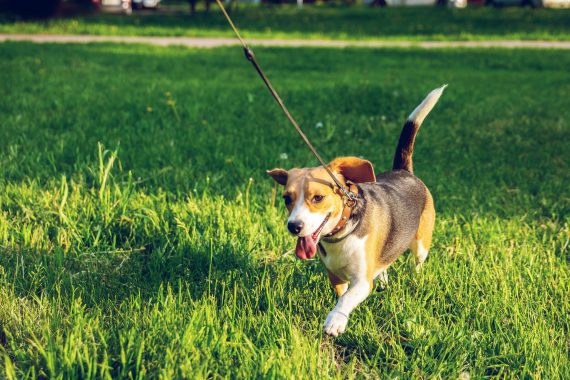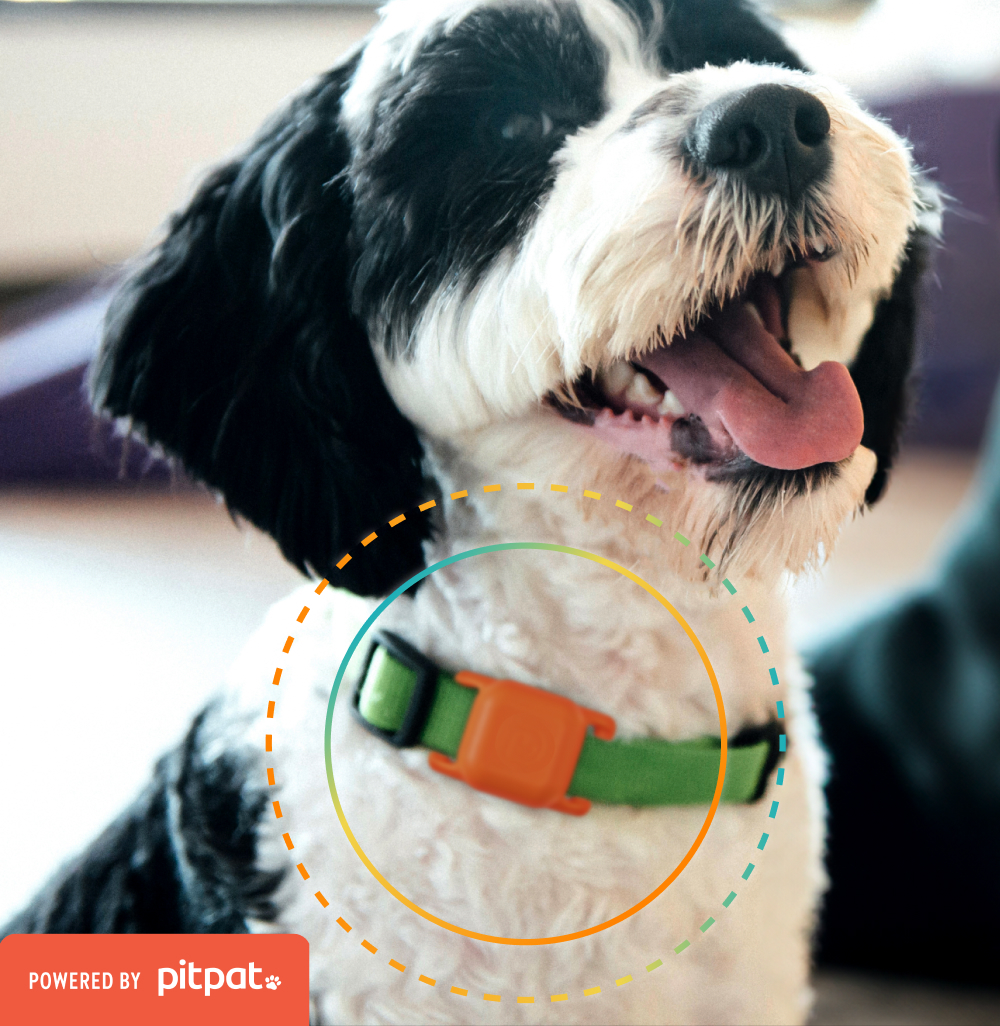3 Tips to Socialize Your New Puppy During the Coronavirus Pandemic

Getting a puppy right now has tons of advantages. Due to COVID-19, the family is home more, which means lots of attention and love for the new family member. But with social distancing and “shelter in place” orders many new puppies are missing exposure to other pups, people, and the community. Here are 3 important steps you can take to prepare your pup for when life goes back to normal.
Step 1: Socialize
Expose your pup to one new experience in or around your house every day. For example, open an umbrella, drop a book, do a jumping-jack, put on a large hat, stand outside when the trash truck comes or walk on a street that has car traffic. Lavishly and happily praise your pup during each new experience. This exercise helps to teach your pup to remain calm when sudden sound or things happen in the environment. This means your pup will be better prepared when life returns to normal and they are out in busy, public areas.
Right now, it’s less likely that people will be approaching you to pet your new puppy. This means that your dog isn’t getting used to having strangers approach or pet them, but you can still help your pup learn that strangers are fun! When on a walk, happily praise and give your pup a treat as someone approaches. Keep praising your pup until that person passes. This will help your pup learn that people coming toward them is a wonderful thing.
If you are in a community where people are wearing masks and/or gloves when out on walks, expose your pup to those items in your house. Put on your mask, praise and treat your puppy, then remove the mask. Repeat until your pup is unfazed by your face or hand coverings. This will make sure your pup isn’t scared when they see masks or gloves on strangers.
Your doorbell is probably ringing less than it used to or it only rings when a delivery person drops a package. This means your pup isn’t learning how to properly greet people at the door. Doing “set ups” now will make sure your pup is well behaved when family and friends do start to come over again! Place a small Tupperware container full of treats near your front door. Have a family member walk outside. They should wait for 2 minutes and then ring the doorbell. You approach the door with your puppy. Right before you open the door, throw 5-10 small treats on the ground next to you. Your dog will start to eat the treats and if they are eating the treats they can’t jump on the “guest!” They also learn that going to the door to meet someone is a positive and fun experience.
Learning how to interact with other puppies is critical for puppy development. Unfortunately, it is more difficult right now since many dog parks are closed and there are few group puppy classes. When you are out for walks, praise and treat your puppy any time they see another dog. If they want to stop and watch that dog walk by, let them! If you tell them “no” or try to drag them away from the situation, they will start to learn that seeing other dogs is a bad thing. When your pup does start to walk, praise them.
If there is a neighbor who is willing to allow your pup to meet their dog, ask that person if their dog is okay with puppies. Not all dogs appreciate the bounciness and energy of a puppy. Make sure to keep all meetings positive and brief. You can always extend the encounter as your pup learns more social skills.
If you have a family member that is already visiting you during the quarantine, have them bring their puppy along. Before the dog arrives, pick up anything that your puppy or the other dog might try to guard. This includes food dishes, dog beds, chew bones, and favorite toys. Have your pup and the family member’s dog meet outside first. This will make sure your pup doesn’t get startled by your relative’s dog or vice versa. Once in the house, allow the pups to play but make sure to give them a break at least once an hour. Putting the pups on leash or giving your puppy naptime in the crate will help to make sure that neither pup gets overtired or cranky.
Step 2: Handling
Most groomers are closed, vet visits are being kept at a minimum and because of social distancing your pup is not being touched by as many people as they normally would. This means it is up to you to get them used to being handled!
Touch and examine your pup’s feet, nails, mouth, ears, eyes and tail three times a week. Praise them and give them treats throughout the process.
Buy a dog brush and groom your pup for 3-5 minutes every day. Put a small amount of peanut butter on a spoon or paper plate then put it in the freezer for a few hours. Once the peanut butter is frozen, have a family member hold the spoon or plate. As your pup is licking the treat, praise and brush them. When you are done brushing, put the peanut butter away until next time. If your puppy is extra wiggly, put them on a leash so that you can brush them without having to hold them too tight.
People pet dogs in a bunch of different ways. If your pup was meeting new people, they would naturally be learning that different styles of petting are okay. Due to COVID-19, most puppies are missing out on this exposure. Help prepare them for the influx of strangers who are going to want to pet them by getting them used to different types of pets. For example, scratch them under the chin, pat them on the head and pet them against the grain of their hair. Praise your pup as you pet. If at any point, they get nervous, stop and try again later.
Step 3: Routine
Most people are home more than normal. This is great for a new puppy, but make sure to prepare your pup for how life will look when you go back to work and/or the kids are back in school.
Working from home means schedules are likely less structured and stringent, but to help your pup feel safe and secure, keep them on a set schedule. They should eat, play, and nap about the same time every day. This schedule should mimic the schedule of your “normal life” not the schedule you currently have.
Put your pup in their crate or other safe area for a total of at least 2-4 hours a day. During this time, the family should be in another part of the house. This helps your pup learn to be alone which means that they won’t have separation anxiety when you do have to leave them. If your pup gets upset when they are left, give them an extra special chew bone or treat that they only get during this time. You can also put on the radio or TV. This not only helps to cover the sounds of the family being in the house, but it also helps your puppy feel less alone.












